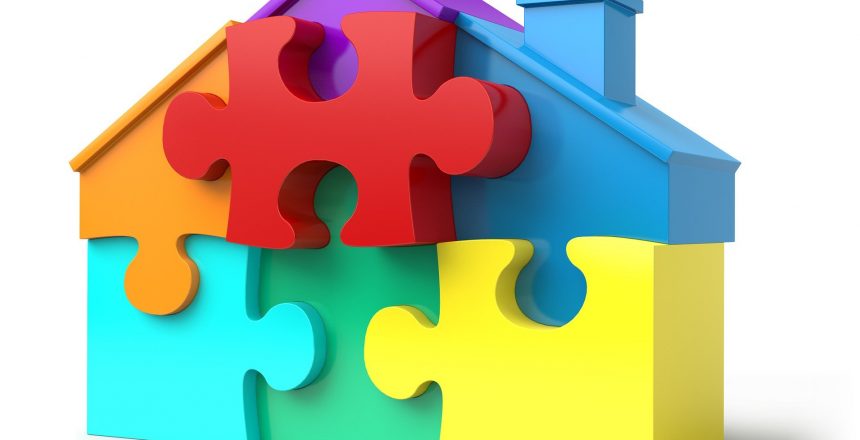In this share of freehold guide, we’ll explore the ins and outs of owning a share of the freehold for the building in which you own a property. So, whether you’re considering buying a share of freehold or a flat that comes with a share of freehold, we hope to be able to answer all of your burning questions, right here.
This share of freehold guide will answer the following:
- What is a share of freehold?
- What is a freehold?
- What is a freeholder responsible for?
- What is the difference between freehold and leasehold?
- How do you obtain a share of freehold?
- What are the advantages of owning a share of freehold?
- What are the disadvantages of owning a share of freehold?
What is a share of freehold?
A share of freehold provides the holder with ownership of a percentage of the freehold interest in a building. Typically, a share of freehold is held by a leaseholder of one of the flats in this building, while the other shares are held by all or a few of the other leaseholders in the same building. The shares can either be held in the leaseholder’s personal names, or the leaseholders can own a share in a company (set up by the leaseholders) that owns the entire freehold.
What is a freehold?
A freehold provides the owner with outright ownership of an area of land and any buildings upon it for an unlimited amount of time. Thus, the freeholder owns the title absolute. There are many different types of freehold property, including; land, residential houses, pubs, and commercial offices. Buildings containing multiple leasehold units such as blocks of flats can also be freehold. However, in addition to owning the land and the building, the freeholder will be legally required to adhere to the terms of each lease and a variety of legal obligations.
What is a freeholder responsible for?
Although a freeholder’s responsibilities vary depending on the terms set out in the lease, they typically include:
- Arranging repair and maintenance works for the building and following the Section 20 Consultation procedure when required
- Arranging internal and external cleaning, painting, and decorating
- Managing utility supplies, plumbing, and heating for communal areas
- Arranging communal garden maintenance and pest control
- Arranging adequate buildings insurance
- Communicating with contractors and arranging payments
- Overseeing maintenance and repair works
- Collecting ground rent, service charges, and insurance premiums from leaseholders
- Preparation of budgets and management accounts
- Ensuring that the building meets strict health and safety regulations
What’s the difference between freehold and leasehold?
While a freehold provides outright ownership of the property and the land for an unlimited amount of time, a leasehold provides ownership of a property for a limited amount of time. As such, leaseholders with ageing leases will likely have to pay to extend the term of their lease in order to continue living in their property.
Leasehold properties are typically flats and apartments that reside in purpose-built blocks or converted buildings containing multiple leasehold units. While owners of such properties have rights over their demised premises, they do not own the building or the land, as these belong to the freeholder.
Consequently, the freeholder is entitled to charge the leaseholder rent for living in his building, known as ‘ground rent’. Furthermore, leaseholders will be responsible for paying for repairs, maintenance, and insurance for the building as per the terms of their lease.
How do you obtain a share of freehold?
It is possible to obtain a share of a freehold in three ways:
- Collective Enfranchisement
Collective Enfranchisement is where leaseholders within a building come together to collectively purchase the freehold. This is a legal right prescribed by the Leasehold Reform Housing and Urban Development Act 1993. In order to Collectively Enfranchise, the 1993 Act dictates that both the building and the leaseholders must meet strict qualification criteria as follows:
- The building must contain at least two flats
- At least two-thirds of the flats must be owned by qualifying leaseholders
- At least 50% of qualifying leaseholders must agree to Collectively Enfranchise
- No more than 50% of the building can be in non-residential use
- Leaseholders must have a long lease with an original term of more than 21 years
- Leaseholders must not own more than two flats in the building
If these qualification criteria are satisfied and leaseholders wish to proceed with Collective Enfranchisement, they must do so by issuing a Section 13 Notice on the freeholder.
2. Buying a new property that comes with a share of freehold
When the owner of a leasehold property with a share of freehold wishes to sell, they have the option to sell the share of freehold together with the property. On completion of the purchase, the share of freehold would be transferred over to the new owner, where they would also acquire the existing rights and responsibilities set out by the terms of the lease.
In some instances where the freehold is owned jointly in the personal names of the leaseholders, it can be difficult to get the other shareholders to sign the share of freehold transfer documents. This is usually because they want to protect their asset and retain full control without bringing in a new shareholder. On the other hand, the leaseholder may simply wish to retain their share of freehold instead of selling it along with their property.
3. Purchasing a freehold privately with another person
Freeholds sometimes become available for investors to purchase on the open market or at auctions. This is usually a result of the leaseholders within the building declining their Right of First Refusal offer to collectively purchase the freehold. Investors can club together to purchase a freehold, dividing the shares between them however they see fit.
Advantages of owning a share of freehold
Lease extensions & ground rent
One of the greatest benefits of owning a share of freehold is the ability for the owner to extend the lease on their leasehold property without having to pay a premium. Generally, freeholders are entitled to charge a premium in return for granting a lease extension, as compensation for the decrease in the value of their interest. This premium increases each year and can become quite a substantial amount on low leases with less than 80 years remaining.
Furthermore, while a freeholder is likely to grant a lease extension of anywhere between 99 and 125 years, the owner of a share of freehold could extend for up to 999 years. Similarly, a freeholder is likely to require you to continue paying ground rent as per the terms of your lease but as the owner of a share of freehold, you could remove the requirement to pay ground rent from your lease entirely. However, both of these positive actions are subject to all of the shareholders agreeing to the new terms.
Repairs and maintenance
As a leaseholder, you are required to pay for the repairs and maintenance to your building, but you have minimal to no involvement with how, when, and for what cost those works are carried out. Owning a share of freehold provides greater control over such works, which can be managed collectively with the other shareholders or by employing a management company. And while each of the shareholders has a vested interest in maintaining the general upkeep of the building, it’s more likely that related tasks will be carried out economically and efficiently to the benefit of the leaseholders.
Share of freehold advantages in summary
- Increase lease term to 999 years
- No ground rent payable
- Control over repair & maintenance tasks and related costs
Disadvantages of owning a share of freehold
Management responsibilities
A freeholder’s responsibilities can be both challenging and time-consuming and although this burden will be shared, the difficulty can remain. Furthermore, there are a plethora of legal obligations that freeholders need to comply with, such as filing management accounts and annual returns for the freehold company. If they fail to fulfill such obligations, freeholders can be fined.
Naturally, if the freehold shareholders do not have any experience in managing such a building there would be inevitable struggles and even financial loss. In which case, it would beneficial to employ a professional property management company but of course, this would come at a cost.
Problems can also arise when one of the leasehold properties is sold and a new leaseholder takes over ownership of a share of the freehold. While the original shareholders may have worked together successfully to manage the building, the new shareholder may have very different views or may be unwilling to cooperate.
Getting a mortgage
Although flats with a share of freehold are promoted as advantageous for prospective purchasers by estate agents, some mortgage lenders view these types of properties as insecure investments. This is because the positive obligations i.e. the responsibilities to repair, maintain, and insure the building can be easily ignored by the shareholders or they may have difficulty enforcing such obligations. Therefore, the building could fall into a state of disrepair or could be left without suitable financial cover to rectify any damage caused by theft, fire, storms, etc. Consequently, some lenders will be unwilling to agree to mortgages on flats with a share of freehold.
Share of freehold disadvantages in summary
- Freeholder responsibilities are challenging & time consuming
- Freeholders can be fined if they do not comply with their legal obligations
- New shareholders can cause problems with existing shareholders and arrangements
- It may be difficult to get a mortgage on a share of freehold flat
Final thoughts
If you’re thinking about purchasing a property with a share of freehold, it would be incredibly beneficial to find out how well the building is being managed before committing to the purchase. While there can be financial advantages to owning a share of freehold, together with increased security and control, management problems can easily arise. In saying that, management problems can also develop when there is a single freeholder responsible for the building.
What is important to remember is that while owning a share of freehold, you will still need to comply with the terms set out in the lease for your flat or apartment. Merely owning a share of the freehold does not mean that the leaseholder will be able to ignore these responsibilities. Of course, there will also be many responsibilities and legal obligations that will be acquired with a share of freehold. So, it is sensible to take some time to consider whether you feel comfortable with taking these on.
Discover a range of expert resources for leaseholders and freeholders, here.


